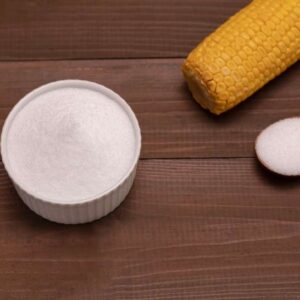
Does Wildfire Smoke Harm Your Health? (Surprising)
Red itchy eyes, burning lungs, a hacking cough…
If you live in one of the (at least) 13 U.S. states stuck under a smoky haze from the blazing wildfires in Canada, you’re likely feeling its effects every time you step outside.
The blanket of noxious smoke hanging over the Northeast and Midwestern parts of the country makes it perfectly clear that the air quality out there is poor.
After all, you can literally SEE and SMELL it hundreds of miles away from its source.
But just HOW dangerous is breathing in that smoke?
Let’s take a closer look.
I’ll cut to the chase. Wildfire smoke poses serious health risks.
I’ve warned readers about the dangers of air pollution before. But wildfire smoke is even WORSE.
Research comparing typical air pollution to the same amount of wildfire smoke shows that wildfire pollution causes MORE inflammation and tissue damage.
You see, the haze lingering out there isn’t “just” smoke. It can contain toxic gases, dust, dirt, and other particulate matter such as plastic, metal, and toxic chemicals (including phthalates and dioxins).
And when it comes to particulate matter, the smaller it is, the more danger it poses. Breathing in particles 2.5 micrometers or smaller (PM2.5), can irritate your respiratory linings. They can even worm their way deep into your alveoli.
Protective macrophage cells will surround some of them. Others may get trapped in mucus and get coughed up. But some can travel from your lungs to other organs.
Common smoke exposure symptoms include throat, eye, and skin irritation, as well as coughing, sneezing, wheezing, and chest tightness.
We know from research on firefighters that breathing in wildfire smoke over several days can trigger lung function and heart problems. Plus, studies link wildfire smoke to higher rates of heart attacks, cardiac arrests, and strokes.
And there’s growing evidence that the adverse effects of smoke exposure can linger long after the haze has cleared, including higher risks for…
- heart disease
- respiratory illnesses
- lung cancer
- brain tumors
- cognitive issues
- fungal infections
The bottom line? You should do your best to AVOID exposure.
That means when there’s wildfire smoke in your area, stay inside if possible. Limit all necessary outdoor activities. Close the windows and vents in your home and car. And pay attention to local air-quality warnings.
Consider investing in a true-HEPA air purifier for your home. A moderately priced model should effectively clear the particles found in wildfire smoke from an average bedroom or living room.
Oh, and those N95 masks you purchased to protect yourself from COVID can come in handy here. If you MUST be outside mask up to reduce the amount of particulate matter you inhale.
For more tips on reducing exposure indoors and out, check out the EPA’s pages on Reducing Exposure to Wildfire Smoke.
P.S. When you think of air pollution the typical culprits come to mind… things like car exhaust, factory fumes, and wildfire smoke. But a particularly nasty air pollutant could be hiding in your OWN home. CLICK HERE to reveal what it is.
Sources:
“Review of the health effects of wildland fire smoke on wildland firefighters and the public.” Inhal Toxicol. 2016;28(3):95-139. doi: 10.3109/08958378.2016.1145771. PMID: 26915822.
“Long-term exposure to wildfires and cancer incidence in Canada: a population-based observational cohort study,” The Lancet Planetary Health, Published: May, 2022, doi.org/10.1016/S2542-5196(22)00067-5
Written By Dr. Scott Olson, ND
Nearly 25 years ago, failed mainstream medical treatments left Dr. Olson in constant pain – and his health in ruins. And that’s when he did something REVOLUTIONARY. He began his career in medicine – and dedicated his life to uncovering the true, underlying causes of disease.
Through his innovative medical practices in Tennessee and Colorado, Dr. Olson has helped cure countless seniors from across America of arthritis… heart disease… diabetes… and even cancer. All without risky prescription drugs or painful surgeries.
View More Free Articles
A New Reason to Ditch Processed Junk
If you’ve ever walked the inside aisles of your local grocery store and thought, “This is all just junk,” your instincts were spot on. A new study published in the journal Thorax just added another red flag to the list of dangers linked to ultra-processed food—a 41 percent higher risk of lung cancer. That’s right....
When Being Winded on Stairs Is Serious (And When It Isn’t)
I had an athlete visit me recently because he experienced shortness of breath while climbing stairs. He is in great shape, so he was worried about what it might mean. “Doc,” he said, “I run five miles three times a week. Why am I huffing and puffing after two flights of stairs?” His concern is...
Study EXPOSES Hidden Danger Lurking in Your Car
We think of our homes and cars as safe havens. But according to a startling new study, they may be flooding your lungs with microscopic plastic particles—every single day. Researchers in France recently found that adults inhale an average of 68,000 microplastic particles daily from indoor air alone. To put that in perspective, that’s about...
Mailbag: Is Modern Food Making You Snore?
“What can cause snoring, and is there a way to correct this issue?” —Seeking Silence Hi Seeking, Snoring happens when the soft tissues in your throat relax and vibrate as air passes through during sleep. While several factors can cause snoring—from sleep position to nasal congestion—I want to share one trigger that might surprise you....
Simple Food Swap SLASHES Dementia Risk 28%
Let’s be honest… who would jump at the chance to cut their dementia risk by 28 percent. And no, you don’t need to run marathons, survive on broccoli, or learn to play the zither (whatever that is) to make it happen. All it takes is one easy swap—something that’s probably already in your refrigerator. Researchers...
This SMART Floss Exposes Hidden Health Danger
Scientists have created dental floss that doesn’t just clean between your teeth—it also tracks your stress while you’re flossing. Now, I know what you’re thinking… “Great—now even flossing is going to stress me out by telling me how stressed I am.” But this fascinating new tool from Tufts University could be a game-changer for understanding...
Is This "Safe" Sweetener Damaging Your Brain?
The headlines are alarming… “Popular Sugar Substitute Linked to Brain Cell Damage” and “Erythritol Could Damage Critical Brain Barrier” are just two of the dozens I’ve spotted recently. But before you toss every sugar-free product in your pantry, let’s take a closer look at what this study actually shows—and what it doesn’t. The latest research...
This Summer Threat Could SPIKE Your Blood Sugar
Picture this… It’s another scorching hot summer day. You crank up the air conditioning while watching the weather forecast, which predicts yet another “record-breaking” heat wave. It’s starting to feel like just another miserably uncomfortable summer. But what you might not realize is that—if you have diabetes—those rising temps could do far more damage to...
Move Over Yogurt—5 Foods That Pack MORE Probiotics
Let’s talk about your gut. The microbiome is the collection of trillions of bacteria and other tiny organisms that live in and on your body—especially in your gut—and help keep you healthy. I’ve written often about how vital it is to maintain a healthy microbiome. And you might have dutifully added yogurt to your shopping...
Is Your Heart Older Than YOU?
Maybe you feel young for your age. Good energy, decent sleep, eating your veggies. But what if I told you your heart might be a decade older than the rest of you? That’s exactly what researchers at Northwestern University found in a new study published in JAMA Cardiology. The average American woman’s heart is about...









